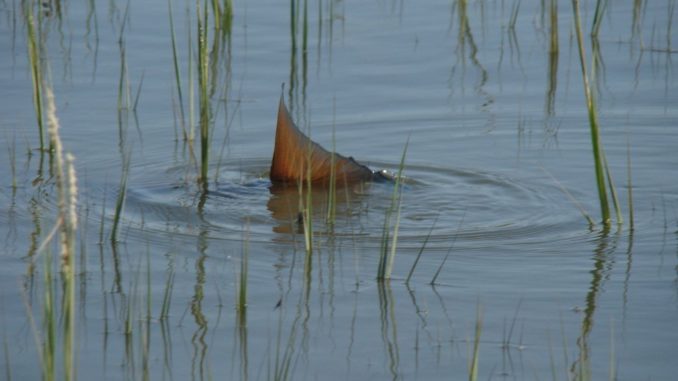
Understand how tides and wind move water and you’re halfway to hooking up with a redfish in just inches of water.
Along the South Carolina coast, June marks the real beginning of warm-season angling, and for many, the combination of warm weather and unusually high tides makes for one of the best possible scenarios.
June provides the first real chance for anglers to count on finding redfish nose-diving in just a shallow lens of water. Few other fishing experiences across the planet compare to the opportunity to target redfish with their noses in the mud and tails flapping above. And no better place is available in South Carolina than the North Inlet-Winyah Bay region adjacent to Georgetown’s historic waterfront.
The region is unique in many ways. Home to the first American settlement by European settlers in 1526, it is among the most-important estuaries along the eastern seaboard, with the Waccamaw, Black, Sampit and Pee Dee rivers pouring through it into the Atlantic Ocean. Converging minutes from Georgetown, these rivers drain approximately 11.5 million acres across North Carolina and South Carolina. In fact, the Pee Dee River watershed is the third largest in the eastern United States.
The North Inlet-Winyah Bay region is home to the 18,916-acre North Inlet-Winyah Bay National Estuarine Research Reserve, which is booming with redfish and a slew of native groceries. The combination of salt marshes and brackish estuaries provide pristine habitat for crustaceans, nursing fishes and a notable redfish population.
The neighboring 17,500-acre Hobcaw Barony, overseen by the Baruch Foundation, encompasses 12,000 acres of the Reserve, consisting of wetlands, marsh, former rice fields, barrier islands and maritime forests. While the majority of its waters are accessible from the estuary on high water, land access is restricted through the private foundation, which employs Capt. Steve Thomas of Hobcaw Fly Fishing Adventures to take anxious redfish anglers on foot into the pristine marshlands contained within the Reserve.
Thomas, an Horry County native, specializes in spring-tidal tactics for redfish during the warm conditions of the year on Hobcaw’s lands. His season begins in the spring when water temperatures rise to the occasion.
“They start tailing in late May and continue well into the fall,” he said. “Water temperature needs to be in the high 60s through the upper 70s to get the fiddlers crabs out of their winter dormancy and scampering around on the flats.”
The china-back fiddler crab is the primary reason reds rush the flats on high water. While only an inch across, these tasty crustaceans rank high on the list of a redfish’s food preference for redfish.
It takes a unique tidal pattern to raises the water level high enough to flood flats that would normally provide a dry-land refuge for these crustaceans. A unique combination of lunar phase, tide, wind and water temperature are crucial factors for predicting a perfect situation to find redfish patrolling on the rarely flooded flats.
Typically, anglers have two chances to find redfish sloshing around in the ultra-shallow flats along the upper range of the high tide. Both the full- and new-moon peaks provide an increased lunar effect on the tide when the sun, moon and earth align.
“At the Goat Island/Clambake Creek station, the tide needs to be predicted at least 5.4 feet,” Thomas said, “but, you must have a favorable wind, too. For instance, if you have a southwest wind on a 5.4 tide, the wind will prevent the water from ever arriving in the rear of North Inlet next to us in Hobcaw.”
Wind can have a dramatic effect on water levels in these areas where the flats lack any elevation.
“Water depth is crucial on the tailing flats, and every inch allowed to creep back into the rear of the estuary counts for us,” he said.
Too much water can also be a problem. Fishing for tailing reds is strictly a sight-fishing venture, and the right amount of water is critical to ensure visibility. Thomas prefers water depths less than two feet, but 12 inches or less is preferable. Additionally, the extreme high tides will flood everything and leave little to concentrate fish in certain areas.
“I prefer a 5.5 to 6-foot tide; they are more concentrated. The 6.7 to 6.9 tides give the fish so many places to go and make finding them tough.”
Tide charts predict the best tailing tides on either side of Memorial Day be the evenings of May 21 through 23 and June 19 through 23.
Around Hobcaw, Thomas fishes two main flats that will have high tides at different times. The flats on the side closest to North Inlet will have high tides an hour earlier than the predicted high tides at the Goat Island/Clambake Creek station. And when Thomas fishes the back side of the island next to the marine lab, high tide will be an hour later — the tide must come around and get in the back of the creeks.
So timing can be everything. Capt. Newman Weaver of Kingfisher Guide Service of Georgetown is a full-time, shallow-water guide who rarely lets a flood-tide scenario fall to the wayside. Weaver schedules his flood-tide trips to take advantage of the peaks of activity on the flats.
“The key time to be there is when the water first rolls up on the flats, as soon as they can feel comfortable. They tail hard at first and stuff themselves,” he said, “but they will fill up quick, and the bite will slow.”
During the spring tides, the water will rise quickly, only leaving a narrow window in these places to catch fish in their initial feeding frenzy. Weaver keeps moving to different places where the current is first rushing onto new flats to stay on the fish.
“I start working the flats near the ocean first, and then work back into the bay near Hobcaw as the tide arrives in those places,” said Weaver, who, as a general rule, begins his trips two hours before the predicted high tide and fishes until the tide peaks and begins to fall. “You do get a flurry as the water starts receding, especially in the places where the fish first entered the flats from the small channels.”
Choosing the right flats to fish is critical for finding the best tailing action. According to Weaver, the places that are good in June are not as good as in August.
“When it is really hot, the flats near deep creeks and near the ocean fish better, but the flats in the back of the bay near Hobcaw along the tree line are better in the earlier part of the year,” he said.
After finding the right flats, finding tailing reds is just that, hunting and finding. Anglers rarely mistake the tail of a redfish protruding from the water for something else. Additionally, pushes and areas of unsettled water will also give away the presence of reds patrolling the flats.
Once located, fishermen can catch tailing reds using several different techniques. Casting in front of them with natural or live baits and scented soft plastics can be productive. Chunks of crab will work, as will live shrimp or finger mullet fished on a jighead. A Power Lock-style hook with lead on the shank is best for soft plastics. Use as little weight as possible, preferably a quarter-ounce — just enough to allow a fisherman to make a long cast to approaching fish.
Tailing reds are a perfect opportunity for fishermen with fly tackle. Toad flies, shrimp and crab imitations between Nos. 1 and 2 — approximately 3-inch flies — work best in dark color combinations. Black/purple are preferred, but browns, tans, olives and bronze will produce bites on the flats.
Most of the time, fishermen will get only one shot at each fish, so make each cast count. Lures and baits should be cast three to five feet ahead of a redfish, along its anticipated path. As fish approach, give the lure a small twitch and hold on. Fly anglers should move their lures no more than eight to 10 inches at a time, pausing in between short strips.
The best time to cast to a tailing redfish is in the middle of his act of acrobatics, according to Weaver.
“They are hard to get with their nose buried in the sand rooting around, but it is a good time to get the fly out there and get the slack out without spooking the fish,” he says. “As the fish gets horizontal again, strip the fly into the fish’s view.”
When cruising, reds are scanning with eyes wide open, looking for any resemblance of something tasty to fill their bellies. Weaver recommends leading the fish a considerable distance and placing the fly, lure, or bait into their projected path.
“As they arrive near the lure, give it a wiggle or two and they will generally smoke it!”
Medium-action spinning tackle is preferred for casting to tailing reds. For fly anglers, 7- to 8-foot rods in 7- to 10-weight are the norm. Use weight-forward, floating line and leaders no shorter than 7 1/2 feet, with a 2-foot section of 20-pound fluorocarbon at the business end.
DESTINATION INFORMATION
HOW TO GET THERE: Hobcaw Barony is accessible from US 17 just south of Pawley’s Island. The tailing flats of the North Inlet-Winyah Bay Region are accessible from two main public boat ramps: the South Island Ferry southeast of Georgetown on South Island Rd. and the East Bay Park landing at the ballpark in downtown Georgetown.
WHEN TO GO: The tailing season begins in May and runs until November. Look for flood tides predicted at 5.4 feet or greater to push water on the flats, and know that winds from the west will keep water out of the estuary, and winds from the east will push more water in. Try to time your trip to arrive at the flat just as the water rushes onto it, because reds will eat ferociously during the first flurry. As the tide progresses, try to work farther inland, as it’s possible to fish high water in different areas for two to four hours.
GUIDES/FISHING INFO: Capt. Steve Thomas, Hobcaw Fly Fishing Adventures, 843-397-0592 or www.hobcawbarony.org; Capt. Newman Weaver, Kingfisher Guide Service, 843-318-0474 or www.gtownkingfisher.com. See also Guides and Charters in Classifieds.
ACCOMMODATIONS: Georgetown Area Visitors Center (www.visitgeorgetown.com), Myrtle Beach Area Convention and Visitors Bureau (www.mbchamber.com), or South Carolina Association of Visitors Bureaus (www.discoversouthcarolina.com).
MAPS: Navionics, www.navionics.com, 800-848-5896; Delorme S.C. Atlas and Gazetteer, 800-561-5105 or www.delorme.com; Capt. Seagull’s Nautical Charts, 888-473-4855 or www.captainsegullcharts.com.




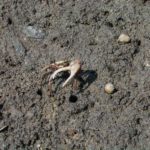

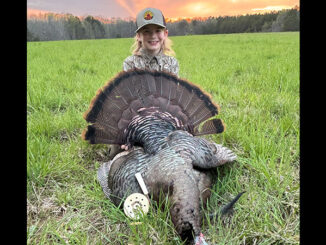
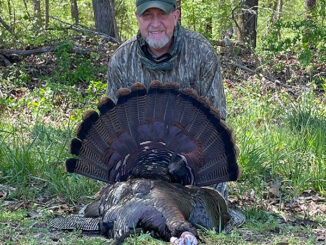
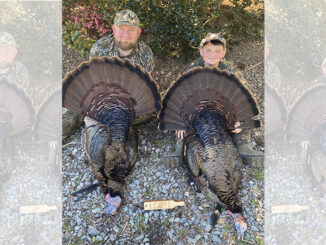

Be the first to comment